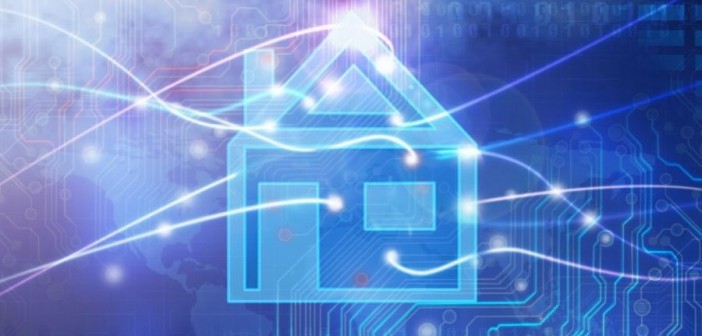As the Internet of Things Grows, Don’t Underestimate Its Scale
The success of Amazon‘s Echo, the voice-activated speaker that can control many internet-of-things devices, has spurred many people to dip into the world of the connected home. Using Belkin WeMo switches, users can automate every power and light switch in their home by speaking, check to see if their doors are locked with the right lock, and lower the temperature setting on their thermostat. However, to fully recognize the scale of IoT, one must think of its history, recognizing that while there wasn’t always such an easy-to-use interface as we are used to today, there were still centralized points at which multiple devices were controlled. The scale of IoT at the infrastructural level is hard to imagine, with one data center alone having hundreds of potential “points” to talk to.
This, among many other challenges in IoT, is why Apple‘s former head of infrastructure strategy, design and development, Scott Noteboom, founded Litbit, a company that created the open-source RhythmOS to talk to the many different “dialects” of new and legacy machines. One core issue of many IoT devices, which include industrial devices that can have a 20-year lifespan, is that they all use different operating systems, which may be un-upgradeable or replaceable. Amazon Echo mastered this on a much smaller scale, learning to “speak” to different points in the home, such as Nest thermostats or Philips Hue light bulbs. By making RhythmOS open source (meaning that anyone could potentially code a dialect for the operating system), Noteboom is doing this at a scale of millions of points. It creates an attractive operating environment for humans and machines to interact with each other, and adds a layer of security to the internet of everything, as Litbit calls it, that is necessary.
“Our software operates as a control layer that enables functionality across any network capable machine/device/thing–ranging from a new IoT light bulb, to a 20-year-old utility generator. … The purpose of our control layer is to disaggregate hardware defined dependencies away from embedded machines, and place them onto a highly elastic/scalable software layer that runs on commodity computers. This enables interoperability between everything, using a “software defined” approach that enables the continuous advancement of technology feature-sets and functions–with applications from both Litbit, as well as any third-party developer,” said Noteboom.
His approach to the IoT reflects many people’s worries about its rapid growth. Matt Larson of Network World recently remarked that there were six key problems, which can be summarized as communication and security issues. While we may worry that a hacker could take control of a SmartThings hub and turn up a thermostat, at a larger scale the HVAC system of a data center could be used to destroy entire companies. On that same level, Noteboom remarks that the IoT industry also has a big data problem that could have the same issue. He equates machines to users on Twitter, except that while the average active Twitter user sends two 200-byte messages a day, a fully realized world of IoT would include 50 billion active machine “users.” These machines, unlike humans, can talk constantly, all day long, and may be saying the same thing repeatedly (a thermostat could say, “It is 62 degrees in this room,” for example). If each active machine point is sending a message every second, even if it’s mostly the same message, that is 86,400 100-byte messages. This means that, unlike Twitter‘s roughly 500-million-tweet, 100-gigabyte daily data chunk, the IoT could deal with multiple exabytes of data, across multiple operating systems, potentially meaning crucial machine messages (e.g., “This server is overheating”) could be lost in the shuffle. Worse still, as an industry, we really don’t have experience digesting, analyzing, orchestrating, and disposing of data at a level that could be 43 million times that of Twitter. Our perception of big data is grossly underestimated. To quote Noteboom, “Big data today is tiny data tomorrow.”
That scale is why over 25 companies, led by Dell, have joined a consortium to plan future strategy for the IoT. Companies like GE and SAP have joined, showing that even the largest industrial and enterprise companies are, in addition to being interested in the future of IoT, potentially daunted by the prospect of the many operating systems and devices that have been made totally separate.
It’s a daunting task to fix; as the IoT has grown, there have been few sticky standards that everyone can adhere to while building a device. Each IoT device, from a connected alarm clock to a connected fridge, may be one “thing” with multiple “points” (sensors, control points, and so on). While IoT is a huge opportunity for technology to grow and change our lives for the better, it also has serious consumer, enterprise, and infrastructure issues we should all be aware of.
IMAGE CREDIT: Getty Images




